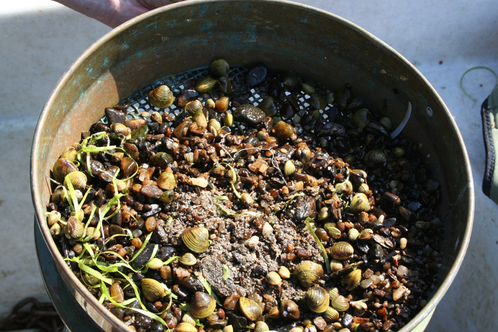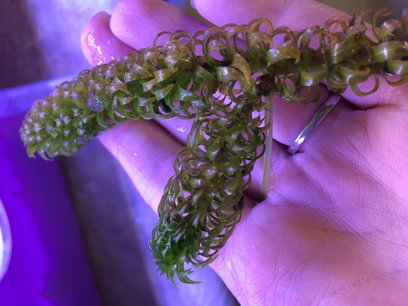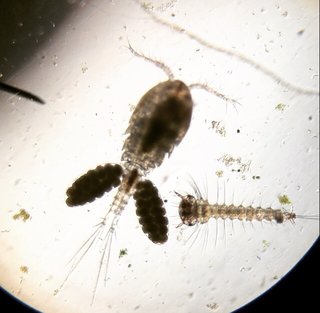Control of Invasive Species

Both proactive and reactive approaches to manage current and future invasive species have been developed at QML. Researchers have identified novel and practical biosecurity solutions to reduce secondary spread and rapidly eradicate invasive aquatic plants and invertebrates. These include the use of thermal shocks and aquatic disinfectants, alongside native biological controls. These approaches are critical, as substantial long-term ecological and socio-economic damages can be prevented with effective short-term management strategies.
QML is not only a home for marine research. We also carry out research into the control of invasive freshwater and terrestrial species, such as the Asian Clam, Corbicula fluminea, the Canadian pondweed Elodea canadensis, and the control of native mosquito populations. Working with species of this nature is subject to strict biosecurity protocols, but an added layer of security comes from housing experiments in a marine environment where these species cannot thrive.
The Asian Clam (pictured above) is a freshwater bivalve and is one of the world's most widespread invasive aquatic species. Their growth and reproduction rates are rapid, meaning that once in a waterway they can spread extremely quickly. They can aggressively outcompete native species due to their ability to filter water at a high rate, depleting nutrients and phytoplankton, and this in turn can lead to marked changes in local biodiversity. Research at Queen's is focussed on methods to effectively eliminate this species from our waterways while minimising impact on our native species.
Elodea canadensis is an invasive North American pondweed. It grows extremely rapidly from tiny fragments to the detriment of other species sharing its environment, and has largely been introduced to our waterways from garden ponds. Elodea can form thick mats, blocking light to other marine plants and choking waterways, and can lead to the local extinction of native species.
It is easily spread, particularly on the hulls of recreational boats, from fragments on clothing, by dumping of garden waste, and potentially by birds and other animals. Studies at Queen's are currently looking at methods of control/erradication of this species, concentrating on contaminated waterways in the Fermanagh Lakes and experimental trials based in the lab at Portaferry.


Finally, control of terrestrial species such as the Culex spp. of mosquito are also being studied Queen's Marine Lab. These species can also be considered to fall under the freshwater umbrella due to their method of reproduction in standing water. As mosquitoes are disease vectors, finding ways in which to control them in areas inhabited by humans is a key area of research. Current studies are investigating the potential effectiveness of native freshwater predators e.g. copepods (pictured alongside a mosquito larva) to control larval mosquito populations, and subsequently reduce the number making it to adulthood. Success in this area could clearly have a wide ranging impact on the control of many deadly and debilitating diseases such as Zika virus, malaria, and yellow fever.
